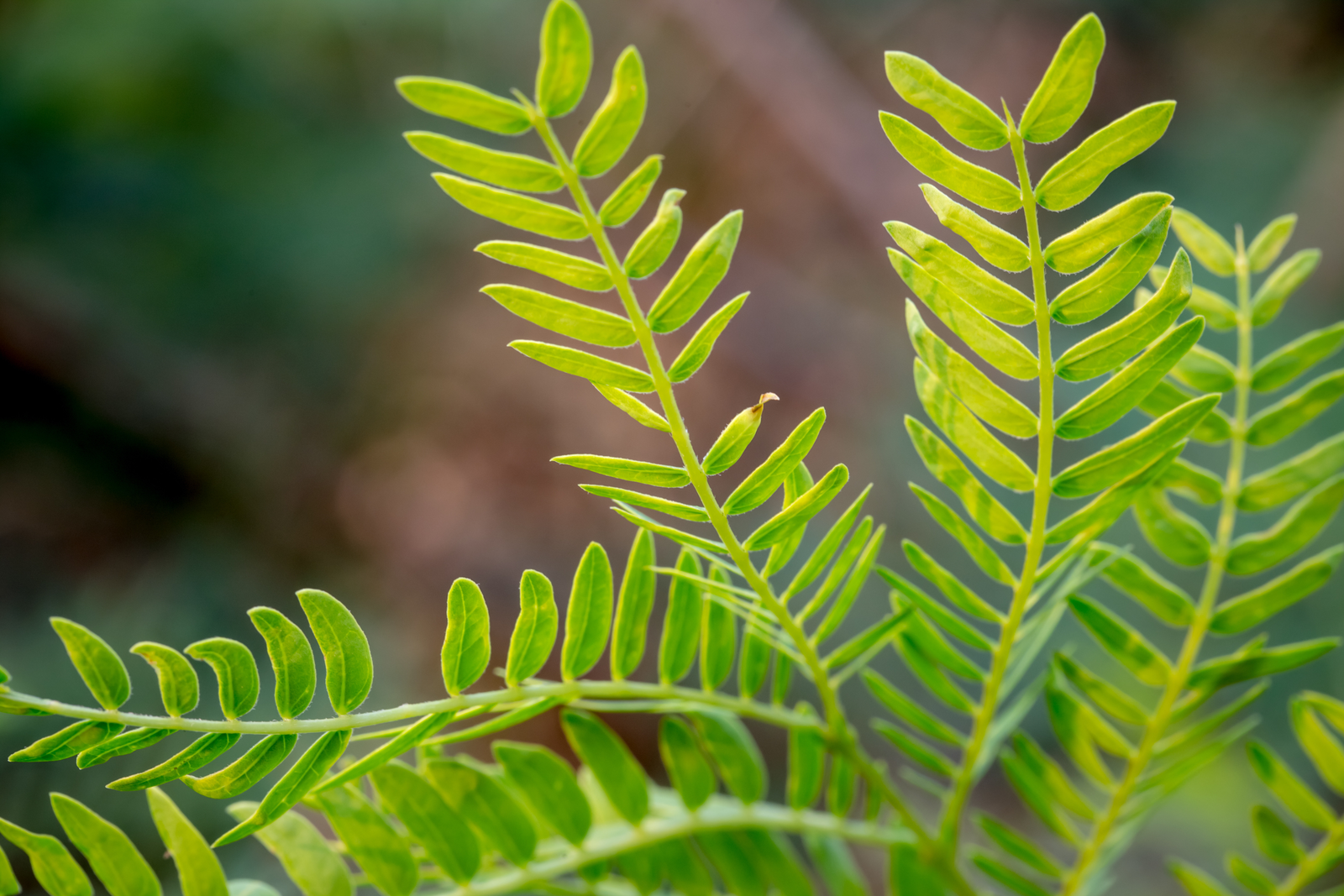Leucaena, promising forage for the tropics

The tree legume leucaena is highly palatable and can make a good livestock feed ingredient. However, a toxic metabolite (mimosine) limits its use. Researchers are therefore looking into solutions, such as mimosine degrading enzymes.
To meet the requirement of food demand for the rapidly increasing population we will have to ensure equivalent increase in animal production, which makes forage crops significantly important. One of the most important forage crops is Leucaena leucocephala (leucaena). Leucaena is a tree-legume, which is native to Central America, and is widely naturalised throughout the tropical and subtropical regions of the world. Native inhabitants of Central America have been using its unripe pods and seeds as food and traditional medicine since ages. Villagers in Thailand use its very young shoots as a food and in some places it is used as shade tree for coffee and cocoa plantation. However, the primary value of leucaena now is as a feed for ruminants particularly, in south-east Asia, India, China, Pacific islands, Hawaii, Central America, Mexico, South America and Australia. Foliages of leucaena are highly palatable to farm animals and are also rich in protein and minerals. Additionally, leucaena is highly tolerant to frequent severe defoliation, drought, and pest and diseases and it can grow quite well on dry and poor soil, where no other trees usually grow and provides edible forage in the dry season when other forage are scarce.
Mimosine: a toxic metabolite
Although leucaena possesses several characteristics that make it a high quality animal feed for livestock production, foliages of leucaena also possess a toxic secondary metabolite, mimosine. This metabolite is a major constraint in broader level acceptance of leucaena as ruminant feed. Mimosine is a toxic heterocyclic non-protein amino acid, which is not only found in all parts of leucaena but also secreted by its roots. On the dry weight basis, the mimosine content of young pods and leaves can be as high as 9% and 4-7%, respectively. Usually, the toxic effect of mimosine occurs when leucaena represents more than 30% of animal diet. The toxic effect of mimosine on animals has been identified in the form of various physiological abnormalities including infertility, fetal deformities with uterine perforation, enlarged thyroid glands, and hair loss. The observed physiological abnormalities as a result of mimosine toxicity are associated with the biochemical properties of mimosine. Mimosine inhibits hydroxylation of proline and thereby prevents formation of hydroxyproline, which is an important residue of collagen. It has been reported that hydroxyproline deficient collagen is more susceptible to the degradation by collagenase and other tissue proteases, thereby explaining the possible biochemical basis of fetal deformities with uterine wall deformation. Furthermore, mimosine chelates several bivalent metallic ions and also forms a stable complex with pyridoxal phosphate, thereby limiting the amount of metallic ions and pyridoxal phosphate for use as cofactors and coenzymes, respectively. Therefore, it has been found to inhibit metal ion-dependent enzymes such as Mg2+-dependent enzyme alkaline phosphatase, Cu2+-dependent dopamine β-hydroxylase, and also various pyridoxal phosphate-dependent enzymes such as cystathionine synthetase, cystathionase, aspartate-glutamate transaminase, tyrosine decarboxylase, tyrosinase, and L-dopa decarboxylase. These inhibitory actions of mimosine on a variety of metal ion- and pyridoxal phosphate-dependent enzymes explain the biochemical basis of physiological abnormalities associated with mimosine toxicity. Cystathionine synthetase and cystathionase are involved in biosynthesising cysteine from methionine via cystathionine. Since hairs contains large amount of cysteine, a decrease in its level due to inhibition of cystathionine synthetase and cystathionase may be the cause of observed hair loss in mimosine-fed animals. Similarly, inhibition of other pyridoxal phosphate-dependent enzymes may be involved in the deformities observed in embryonic development and foetal metabolism. Mimosine also inhibits cell cycle and DNA replication by inhibiting various enzymes involved in the mechanisms.
Protection by rumen bacterium
However, there are some practical solutions to the mimosine toxicity problem. In the 80s, a gram-negative obligatory anaerobic bacterium, Synergistes jonesii, was isolated from the rumen of a Hawaiian goat. Introduction of strains from this species of bacterium into Australian cattle herds resulted in protection against the toxic effect of mimosine. Following this success, a commercial inoculum of this strain was prepared using fermenter to protect cattle herd from the leucaena toxicity. After development of this protection method the problem of leucaena toxicity considered resolved. However, a survey of the protection status of herds in Australia has shown that almost 50% of cattle herd appeared to be unprotected. Loss of activity over the time by S. jonesii is the main concern with this protection method. Therefore, genetic improvement of leucaena by introducing mimosine degrading genes in the plant could be a better choice. In a recent study, Negi and Borthakur from University of Hawaii identified and characterised mimosine degrading enzymes from leucaena and its root nodule symbiont Rhizobium strain TAL1145. The mimosine-degrading enzyme from leucaena was found to be localised in the chloroplast. Such compartmentalisation of mimosine-degrading enzyme prevents its direct contact with mimosine. These enzymes are highly efficient in degrading mimosine. However, the commercial production of these enzymes for direct use with leucaena feed would be expensive. Therefore, further research is underway in which genes for mimosine degrading enzymes will be expressed in the cytoplasm of leucaena. This genetic improvement will result in toxin-free leucaena, which will be safe for its use as animal feed.
This article was taken from the latest issue of All About Feed. To read more articles from the issue, log on or register yourself for free.
The All About Feed app is also available to download for free from Apple, Kindle, Android and Metro stores, information on the go!











